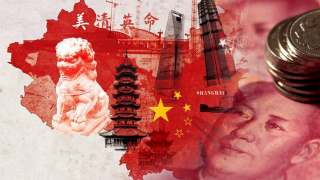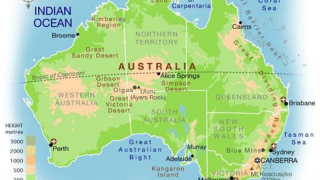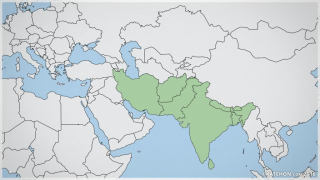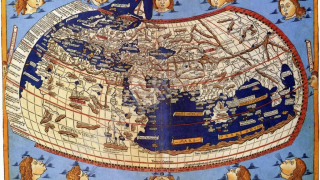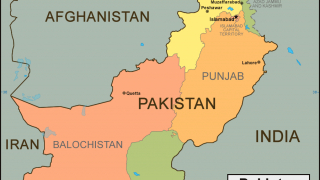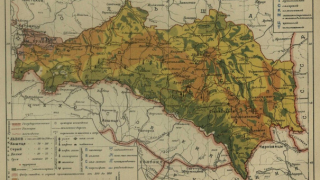South American Geopolitics
The preceding two parts of the research examined the most geostrategically significant events and trends in South American history, thus preparing the reader for better understanding the present-day geopolitical situation in the continent. The following themes are based on historical processes, current game-changing initiatives, and forecasted developments in line with the aforementioned.
The overall direction that the grander situation is evolving in is that Colombia, Brazil, and Argentina are emerging as leaders in the northern, central, and southern parts of South America respectively. Moreover, the Trans-Oceanic Railroad (TORR) is a fundamentally transformative New Silk Road endeavor which stands to totally upend continental geopolitics by helping BRICS member Brazil break through to the Pacific Ocean and create a positive and mutually beneficial platform for cooperation between Mercosur and the Pacific Alliance, both of which were previously engaged in a unipolar-encouraged rivalry but which could realistically cast aside their false differences in the interests of cooperating on China’s One Belt One Road global project.
There are additional geopolitical nuances in South America which will directly affect this megatrend, which is why it’s necessary to discuss the continent in a comprehensive and holistic sense so as to properly convey the importance that each actor holds in one of the New Cold War’s most strategic battlespaces.
Western Fingers
The Guianese Shield states of Guyana and Suriname, as well as the colony of French Guiana which also is totally located within this geographic space, basically function as Western outposts in South America. Guyana used to be a British Colony and Suriname a Dutch one, while their French neighbor is still formally under Paris’ control. They’re not so much “state” or “state-like” polities as opposed to “city states”, seeing as how the capital cities of Georgetown, Paramaribo, and Cayenne dominate their respective entities. Each of these three polities is still very tightly connected to the unipolar world, though they remain horribly underdeveloped and scarcely populated. The only real strategic advantages that they have lay in possible offshore energy deposits and the fact that they can help their foreign partners retain a presence in this part of the Atlantic Ocean and “Greater Caribbean” coast (if one wants to reconceptualize it as such).
There are likely innumerable types of natural resources hidden in their jungled hinterlands, but these remain barely explored and underutilized. Correspondingly, if a concerted effort were invested in deepening the state presence in these reaches and opening up the borderland to foreign exploration, then it’s possible for the US, UK, and/or France to clandestinely build radar and other facilities for monitoring Brazil’s humungous Amazonian airspace. If such an eventuality ever transpires, then it would be geostrategically significant for giving these three Western Fingers a continental importance to complement their maritime one. At most, these polities will never exert a tremendous influence on South American affairs, but their salience derives from the fact that they serve a ‘beachhead’ purpose in assisting larger, more powerful, and wealthier out-of-regional unipolar states in establishing a direct or indirect continental presence.
A perfect example of this is presently playing out in regards to the Venezuelan-Guyanese territorial dispute. In summary, Caracas claims what amounts to nearly 40% of Guyana, which critically also includes its maritime coast which was recently found to be very rich in oil. Washington has predictably sided with Georgetown, and although the situation hasn’t yet been fully exploited to its maximum extent, the US could always send naval units to back up its ally’s claims if ‘push came to shove’. Venezuela understands this, which is why it’s been very cautious about the physical actions that it takes to reinforce its own claims. Caracas does not want to create a pretext for the indefinite deployment of American naval vessels along its eastern coast, as this would make it all the easier for the US to initiate a surprise military strike.
The Venezuelan Triangles
The key detail for regional observers to pay attention to is how Caribbean-South American Venezuela functions as the structural fulcrum for transregional resistance integration through ALBA and Petrocaribe. It uniquely brings together the Caribbean triangle of Cuba-Nicaragua-Venezuela while also doing so for the South American reflection of Venezuela-Ecuador-Bolivia, thus adding yet another strategic layer to why the US is so insistent on destabilizing this crucially positioned country. As can be visibly seen through the Hybrid War that’s been incessantly waged against it, the overthrow of the Bolivarian government in Venezuela would be a death knell to ALBA and Petrocaribe, thus dealing a devastating blow to the last remnants of multipolarity in the hemisphere and making it exceedingly challenging for them to recover any time soon.
“Gran Colombia” Revived
The US’ historical ally in South America stands to become a reinvigorated powerhouse if it’s able to successfully bring an end to the FARC insurgency and sustain the complicated peace process. Colombia has an irreplaceable geostrategic importance because it’s a bicoastal state (Pacific and Caribbean Sea/Atlantic) that has a proud but brief legacy of regional leadership. The 1819-1831 period during which the modern-day states of Colombia, Ecuador, Venezuela, and Panama were united under what historians have since termed “Gran Colombia” is seen as Bogota’s most glorious moment, and it’s predictable that Colombia will try to spread its wings once more if its domestic situation fully stabilizes. Nobody is hinting that Colombia will conventionally invade the current-day neighbors that once used to be part of its formal realm, but just that the country will use creative post-modern methods to extend its influence into those domains.
Venezuela, for example, is perpetually in a state of crisis due to the US-backed Hybrid War on the country, and if Washington is successful in toppling the Caracas government, then the new Western-friendly authorities will probably try to patch up their recent history of difficult relations with Bogota and move the two countries even closer.
This plays out to Colombia’s decisive advantage because it already has a developed and modern commercial economy and is a key player in the Pacific Alliance, thus meaning that it can extend its economic influence into Mercosur-member Venezuela (if the country is still a part of the trade grouping by that time and hasn’t been kicked out by its right-wing “partners”, that is). Also, the low-wage labor that will be prevalent all across Venezuela in the event of a regime change and subsequent economic “liberalization” could be exploited by Colombian investors, as could Venezuela’s world-class energy reserves. The way that Colombia sees it, the combination of its own economic prowess and dynamism with Venezuela’s cheap labor and copious supplies of natural resources could help Bogota become a powerful regional actor which attracts the interest of Great Powers all across the world.
As for Panama, Colombia doesn’t have as many enticing prospects for expanding its influence to this country like it does for Venezuela. Panamanians are proud of their American-backed secession from Colombia and reluctant to come under Bogota’s influence once more, though this may be unavoidable if the country joins the Pacific Alliance. Still, Panama will likely remain an American-aligned proxy in Central America due to the Panama Canal, as Washington would be reluctant to cede its influence to anyone else because of the importance that this crucial waterway provides. It’s also equally unlikely that Ecuador will fall under Colombia’s spell, though it wouldn’t be for lack of trying. Ecuador, like Panama, is very proud of its history of separateness from Colombia (Venezuela undoubtedly is too, but the increasingly right-wing population is more inclined to ‘compromise’ on this through ‘economic-strategic collaboration’ in the event of a regime change), but has historically fought to prevent itself from becoming too strongly influenced by either of its neighbors. More than likely, Ecuador will strive to retain its strategic independence, though it will probably become the object of a heated competition between a revived “Gran Colombia” and new undeclared form of the Peru-Bolivia Confederation.
The last commentary that should be said about “Gran Colombia’s” attempted return as a geopolitical actor is that this can also take a transregional form as well by seeing Bogota become much more actively involved in Central American affairs. Nicaragua’s earlier disappointment at losing the International Court of Justice (ICJ) case over Colombia’s San Andrés y Providencia and other nearby island groups could create a South China Sea-like situation in the future. Even if it doesn’t, the location of these territories right at the terminal point of the Chinese-built Nicaragua Canal could give Bogota a strategic advantage in interfering with or spying on this waterway on the US’ unipolar behalf. Moreover, Colombia’s rising economic profile means that it will inevitably become a larger trading partner for the Central American countries, signifying that it might end up competing with its Mexican Pacific Alliance partner. It’s possible for the competition to be conducted in a friendly and multilaterally beneficial way, but at the same token, a strategic dilemma might play out whereby these two poles struggle for hegemonic influence over this region. It wouldn’t lead to a conventional clash, of course, but it could disrupt the nominal unity in this economic bloc and inadvertently have the effect of pushing Mexico to seek more reliable trading relations in Asia if it’s on the ‘retreat’ or for Colombia to double down on its efforts to exploit Venezuela.
Peru And Bolivia Pair Up (Again)
The Peru-Bolivia Confederation was a very short-lived geopolitical construct which appeared to be doomed to historical oblivion ever since Chile militantly forced its dissolution, but China’s TORR is opening up the possibility of tying these two Andean neighbors closer together like never before, albeit in an informal sense unlike the de-jure one from almost two centuries ago. Bolivia and Peru share the same Incan civilizational roots, and each needs the other very much under the present geopolitical conditions. Bolivia wants the secure and reliable maritime access that Peru’s Ilo TORR port provides in order to compensate for the loss of the Litoral Department to Chile after the War of the Pacific. Peru’s interests are complementary with Bolivia’s since it wants to achieve the most cost-effective and quick route to accessing Brazil’s terminal TORR port of Santos right outside of Sao Paolo.
Had TORR not cut through Bolivia en route to Peru, then the project would have been woefully expensive to build and would have had to circumnavigate Brazil’s lengthy western border, adding many more years and miles of construction (and costs) to the endeavor. In a geostrategic-historic stroke of luck, incorporating Bolivia by making it an integral transit state for TORR will energize its integrational prospects with civilizationally similar Peru, which can consequently lead to a de-facto revival of the Peru-Bolivia Confederation. This political entity holds immense promise and could emerge as a powerful actor in the future, but it would have to reconcile with its two most important internal contradictions. Peru is a member of the Pacific Alliance while Bolivia is about to join Mercosur, and despite Lima’s embrace of neoliberal trading practices, Sucre remains committed to socialism and leftist principles. It might ironically be because of these differences that the two states never rejoin into a confederation but instead remain as independent partnered states along the same line as Russia and its post-Soviet Eurasian Union allies.
The strategic differences between the two states which prevent their legal political integration with one another might actually be a hidden benefit that pushes them into engaging in this new form of international partnership first unveiled in Eurasia between Russia and its Eurasian Union partners, and Russia and China. This could be much more sustainable and advantageous for Peru and Bolivia by also giving them a stronger voice when dealing with Brazil, and it would additionally allay the same sort of regional geopolitical fears that first emerged when they unified approximately two centuries ago (and which quickly led to the foreign intervention that ultimately dissolved it). The possibilities of enhanced Peruvian-Bolivian partnership weren’t many prior to TORR, but in the New Silk Road century, China is creating regional integration opportunities with its infrastructural projects which were thought to have previously been impossible or historically outdated, thus changing the entire nature of South American geopolitics.
The Ecuadorian Equalizer
This coastal country is smudged between its larger Colombian and Peruvian neighbors, both of whom it’s had a history of conflict and rivalry with, which had the effect of strengthening Ecuador’s very strong national identity. In the forecasted future where a confident Colombia and a proud Peru extend their regional influence by retracing their historical footsteps, it’s very likely that Ecuador will be caught in the middle between these two regional powers and forced to balance between them. Neither Bogota nor Lima believe that they can fully integrate the Ecuadorians into their spheres of influence, but they’d still want to beat the other out in gaining a more robust presence there. In a sense, the post-modern revival of “Gran Colombia” and the return of the Peru-Bolivia Confederation could lead to the two Pacific Alliance partners entering into a rivalry with the other over the middle-ground country between them, just as had happened historically in the past.
Right now Ecuador pragmatically trades with both of its neoliberal neighbors despite having a more socialist-inclined economy and being part of the Venezuelan-led ALBA grouping. The country is also very close to China and is seen by some to be Beijing’s commercial-energy outpost in the continent, which is all the more structurally curious considering how the American dollar is Ecuador’s official currency. All of this goes to show just how diversified Ecuador’s policies are, whereby it doesn’t shy away from engaging with its neoliberal neighbors out of pragmatic necessity, yet it still remains ideologically committed to the socialist-leftist principles of the Bolivarian Revolution.
Although it’s a multipolar country that’s very close to China in economic and energy terms, it uses the dollar as a legacy of its previous structural situation which has become all but impossible to reverse without serious self-inflicted damage to the entire system.
Ecuador thus has a natural balancing tendency which is innately part of its geopolitical identity after having survived being wedged between Colombia and Peru for nearly two centuries. It’s expected that it will continue this policy in the event that its neighbors become more assertive in the future per the aforementioned scenario analyses, but this is conditional on whether or not Ecuador’s strategic independence survives the post-Correa era. The socialist firebrand isn’t running for another term in office, and the upcoming elections in February 2017 will be a prime opportunity for the US to launch a disruptive Hybrid War in swaying the results towards their unipolar favor. If Ecuador falls, then it will likely be condemned to economic servitude and peripheral irrelevance for the foreseeable future, but if it stands strong and beats back the incoming threats, then it can prosper as the geostrategic equalizer between its Colombian and Peruvian Pacific Alliance neighbors.
The Brazilian Hegemon
Brazil has the potential to rise and become the Great Power hegemon over all of South America. Its enormous population grants it amazing consumption and production capabilities, and it’s extraordinarily wealthy in natural resources. The Amazon rainforest has untold riches hidden within it, while the vast Cerrado hinterland has recently turned into a promising agricultural center. Moreover, Brazil has large offshore deposits of oil and gas. On the regional front, it’s also the leader of the Mercosur trading bloc and is involved in many of the Initiative for the Integration of the Regional Infrastructure of South America’s (IIRSA) integration and development hubs. Over the past year however, Brazil really showed its desire to become the continental leader and break through its geopolitical constraints by partaking in China’s ambitious TORR project and spearheading a logistical trade route through the Andes and to the Pacific Ocean.
As history reveals, however, many of Brazil’s neighbors have been apprehensive about its rise and willingness to exercise its leadership capabilities, with Brasilia’s strong sense of Great Power awareness invoking Hispanophone suspicions from other countries in the continent. That appeared to change with the advent of Mercosur and the Pink Tide, but now that Operation Condor 2.0 is in full swing, it could reemerge in undermining Brazil’s (unipolar-influenced, right-wing) rise. Nevertheless, no matter who’s at the helm in Brasilia, the unmistakably enduring fact is that the country is moving forward with TORR, which completely revolutionizes the continent’s geopolitics by strategically marrying Brazil to the Bolivian transit state and the Peruvian port terminal of this project. This means that all three countries’ geostrategic futures are interconnected and increasingly dependent on one another. The whole point of TORR is to make it easier, quicker, and cheaper for China and Brazil to trade with one another, with the expectation that Bolivia and Peru will also commercially benefit from this because of their key positions along the route.
If completed, TORR would be the first time that a transcontinental railroad had ever been built in South America and would essentially bring Peru and Bolivia into Brazil’s sphere of influence. This geopolitical breakthrough would divide the continent into three latitudinal zones, each with its one regional leader. The Northern one would see “Gran Colombia” as the most important state; the Central Zone would have Brazil as the leader; while the Southern one would have Argentina as the strongest state. Brazil is obviously the only actor capable of continental hegemony and bridging together the Pacific Alliance (of which Colombia and Peru are both a part of) and Mercosur (which is mostly dominated by Brazil for all practical intents and purposes, with Argentina playing the next most important role). Likewise, TORR is the only infrastructural instrument capable of doing this in a multilaterally beneficial way, but it’s possible that the US might use its influence on Colombia and recently over Argentina to figure out a strategy to undermine the South American Silk Road.
Pivot States
There are four states which could swing one way or another in moving between the three strategic “blocs”, and from north to south, these are:
* Venezuela:
The birthplace of the Bolivarian Revolution is under serious threat of regime change due to the US’ never-ending Hybrid War. If Maduro or any of his hand-picked successors can continue the Chavismo model, then the country will resist “Gran Colombia” and remain as the strongest multipolar outpost in the Western Hemisphere, thus allowing the two sides of its strategic ALBA triangle to hold out a little bit longer from the asymmetrical offensives being waged against them. If Caracas falls, however, then the country will likely be incorporated under “Gran Colombia’s” sphere of influence, and this would also heighten the chances that Ecuador will come under its sway as well.
* Ecuador:
If the country remains independent and successfully balances between Colombia and Peru, then it won’t encounter any major problems, but if one side or another gains the upper edge against their rival, then the extended proxy competition could become large enough that Peruvian-ally Brazil throws its weight behind the unofficial Peru-Bolivian Confederation while Colombia’s Mexican ally could do the same with the revived “Gran Colombia”. This stands to spark an interesting scenario whereby Latin America’s two largest countries and most prominent Great Powers indirectly engage in a proxy struggle in a strategic corner of South America. Even if this very dramatic scenario doesn’t pan out, Ecuador could still remain a theater of competition between Colombia and Peru in the 21th century just like Uruguay was between Brazil and Argentina during the 19th century, with all of the implications for a prolonged civil war as well.
* Paraguay:
This landlocked state is equally suspicious of Argentina and Brazil due to the genocidal legacy of the War of the Triple Alliance, and it’s always sought to pursue an independent streak in balancing between them to its ultimate benefit. Paraguay was the first of the South American states where Operation Condor 2.0 succeeded, having overthrown democratically elected and legitimate President Fernando Lugo in a ‘constitutional coup’ in 2012, thus making it the ultimate continental ‘maverick’ and the object of its two larger neighbors’ distrustful ire at this time.
Paraguay is hesitant to get too overly close with Brazil because of the fear that the Lusophone country’s landowners who have invested in the northeast might one day pursue an “Acre scenario” in pressing for the annexation of the border region where their holdings are, just as they did against Bolivia at the turn of the last century. Concerning Argentina, the proud Paraguayans remember how Buenos Aires took decades to recognize them as an independent country and renounce their informal claims that the territory was nothing more than a ‘renegade province’. They also know that becoming too dependent on Argentina as a means of balancing against Brazil could be equally as harmful for the country’s strategic sovereignty.
There are convincing arguments that can be made for Paraguay’s incorporation into either ‘bloc’. Asuncion is obviously attracted to the prospect of more easily and cost-effectively shipping its agricultural and livestock goods to China via TORR, provided of course that an extension can be built to the country and Paraguay achieves have reliable access to this route through either Brazil or Bolivia.
On the other hand, Paraguay’s top export partners are Brazil, Russia, Chile, the Netherlands, and Italy, while its imports mostly come from Brazil, China, Argentina, the US, and Chile, signifying that most of its trade is conducted either with its neighbors or – as can be assumed with the exception of China – across the Atlantic in the eastern vector, which in that case infers that goods are likely transiting by boat through the Paraguay and Parana Rivers which ultimately exit into the ocean through Argentine territory.
Tiny Paraguay could likely have infinite market potential if it were to team up with Brazil’s TORR and export more to China, but the main problem in having this happen is that Asuncion recognizes Taipei, and not Beijing, as the “legitimate government” of One China. Until this is resolved, it’s unlikely that the People’s Republic will reward the landlocked agriculturally enticing country with access to the Chinese marketplace, thus leading to Paraguay likely siding with Argentina and its established riparian trade routes to its cross-Atlantic partners instead of jumping on board the South American Silk Road and ditching its southern neighbor for Brazil.
* Chile:
The last of the pivot states is Chile, though it’s also the most unique one in the sense that it doesn’t really fit into either the Central or the Southern Zone mostly due to its unique historical and economic situation. Although geographically part of the South, barely any of those countries count among its top trading partners, with the Observatory of Economic Complexity listing China, the US, Japan, South Korea, and Brazil as its main export market and China, the US, Brazil, Germany, and finally Argentina as its primary import sources. The peculiar situation whereby Chile is much more strongly tied to its transoceanic partners than to those within its own continent is a legacy of its consistently open market policies which attracted worldwide appeal throughout its post-independence history. Despite being located right next door to Argentina and officially being part of the same three IIRSA integration-development hubs, the historical rivalry between the two obviously had an enduring impact on the reluctance of both sides to establish more solid economic relations with the other.
Given Chile’s disconnection with the Southern Zone and its lack of enthusiasm for more readily developing robust full-spectrum relations with Argentina, one might automatically assume that this makes the country more likely to associate with the Central Zone, but that’s also not necessarily the case either. First off, while Chile could in principle deepen its established import/export partnership with Brazil to the level of somehow “countering” a resurgent Argentina pining for dominance in the Southern Zone, there are concrete geographic and practical limits to just how far it would go with this without sacrificing its own pragmatic self-interests. Moreover, while Chile is within close proximity to TORR, its acrimonious history of relations with both Peru and especially Bolivia remains a major impediment to the development of relations with these two Central Zone states. The War of the Pacific saw Chile annex not only Peruvian coastal land, but unforgettably Bolivia’s Litoral Department and its only outlet to the sea, thus dooming it to being a de-jure landlocked state ever since that time.
Peru and Bolivia are set to intensify their cooperation with one another through the proposed postmodern structural revival of the Peru-Bolivian Confederation in all but name, building off of the New Silk Road integrational prospects presented before them through TORR and recalling their civilizational and historical similarities in many fields. Therefore, it’s likely that these two states will act as a bulwark against Chile, despite Peru being nominally allied with it in the economic sense through the Pacific Alliance. It would be most ideal if Chile could cooperate real closely with Peru, Bolivia, and Brazil through TORR, but Santiago might actually see the project as a threat to its own economic attractiveness and something which it must compete against. This could diminish the likelihood that the country would attempt to improve strategic relations with the two Andean members of the Central Zone, thereby adding more credence to the argument that Chile essentially looks after its own individual interests first and foremost (as it has historically done and which has earned it a negative reputation among some people in the region) and could practically function as a Zone of its own.
The Pivot Belt
Having assessed most of the geopolitical makeup of South America, it’s now possible to conceptualize a transnational structure known as the Pivot Belt. This strategic stretch of territory includes Ecuador, Peru, Bolivia, and Paraguay, and contains representatives of each of the three primary continental Zones. Ecuador is part of the Northern Zone of which “Gran Colombia” is the regional hegemon, Peru and Bolivia are likely to deepen their all-around integration and are aligned with Brazil in the Central Zone, while Paraguay is part of the Southern Zone and is closer to Argentina. The Pivot Belt is marked by the core countries of Peru-Bolivia, each of which stand to enter into competition with the peripheral ones of Ecuador and Paraguay, owing to both strategic and historical reasons.
Ecuador, as has already been written, was previously involved in several wars with Peru over disputed territory, and its citizens are exceptionally proud of having maintained their independence despite being wedged between its much larger and stronger Colombian and Peruvian neighbors. Paraguay is pretty similar in these regards because of the lasting and unforgettable legacy of the War of the Triple Alliance, which almost obliterated the country’s entire population and led to the creation of an unshakable identity. Bolivia wasn’t party to this conflict, but it did fight against Paraguay during the 1932-1935 Chaco War, and despite this conflict having been finished nearly a century ago, it still plays an impactful role in influencing the lingering distrust between the two populations.
From a structural standpoint, the Peru-Bolivia Confederation (to remind the reader, this is the author’s name not for a formal linkage of both countries, but for their future full-spectrum strategic integration) contains the continental infrastructural integration vehicle of TORR, while Ecuador and Paraguay are pivot states which could potentially connect or delink the Central Zone with its Northern and Southern counterparts. This means that those two countries acquire an even greater strategic significance than was previously mentioned in the earlier subsection. Furthermore, Ecuador and Paraguay could also ‘ditch’ their respective Zones and align with the Peru-Bolivia Confederation in forming their own integrational space, which in that case would be a game-changer for the continent’s geopolitics.
The Northern/Caribbean Zone, with “Gran Colombia” as the anchor, would include Venezuela, Guyana, Suriname, and French Guiana, while Brazil would break off and form an Eastern/Atlantic Zone all in its own right. The new Central Zone would be the Pivot Belt, while the amended Southern Zone would simply be just Argentina and Uruguay. Chile, like it was analyzed earlier, would become its own Southwestern/Pacific Zone.
Looking at the map, it’s clear to see that the Pivot Belt/Central Zone would become the ultimate South American geostrategic balancer if its members could indeed integrate with one another, though even if this doesn’t succeed in full or underperforms in practice, then that still doesn’t change the fact that the Peru-Bolivian Confederation is the undisputable core of the whole arrangement. Accepting this geopolitical logic and expanding upon it, one can also draw the conclusion that Bolivia is the core of the ‘Confederation’, and in fact, of the entire continent as a whole – both in the geographic and strategic senses.
The Continental Core
Continuing off of the last point, Bolivia is undoubtedly South America’s most pivotal country. To reference what was already written about the continent’s geopolitics, it forms the geographic center of the ‘original’ Central Zone between itself, Peru, and Brazil, and is also a fundamental transit state for TORR. Its geographic closeness to Paraguay gives it a chance to coax its landlocked neighbor into agreeing to closer relations, which could consequently get it to ‘ditch’ the Southern Zone and help construct an amended Central Zone like what was proposed in the aforementioned section. Another factor contributing to Bolivia’s pivotal position is that it’s a member of the multipolar ALBA grouping and has been expanding its strategic ties with Russia and China.
Even in the unfortunate event that Venezuela succumbs to the US’ regime change Hybrid War against it (which still remains to be seen, as the country has been impressively withstanding this asymmetrical pressure for years now), Bolivia would still remain as a socialist outpost in the continental heartland, so long as its government doesn’t fall in the face of yet another of the US’ Operation Condor 2.0 schemes. It’s indeed true that the US has been working to destabilize the Plurinational State of Bolivia (as it’s officially known as) by using various Hybrid War mechanism such as fostering separatism in the “Media Luna”, and American subterfuge operations are only expected to expand as the landlocked country becomes ever more important to the continent’s strategic calculus.
This will of course be discussed at length in Bolivia’s individual Hybrid War profile later on in the research, but it’s worthwhile at this stage for the reader to appreciate the grand importance that this country plays in South America and to link this with the Law of Hybrid Warfare which states that transit countries facilitating multipolar transnational connective infrastructure projects are prime targets of the US’ externally driven identity conflicts. Bolivia satisfies this requirement in every sense, which signifies that it is the most susceptible of all the South American countries to the Eastern Hemispheric application of the US’ Hybrid War, namely that it’s vulnerable to collapsing into a manufactured civil war much more so than its continental counterparts which mostly only stand to experience largely non-violent regime change (whether through Color Revolutions, ‘constitutional coups’, or structurally preconditioned elections such as in Argentina).
Venezuela is also at risk of falling victim to this sort of widespread devastation, though for entirely different reasons. Caracas is the hemispheric leader of the multipolar ALBA movement and its Petrocaribe energy counterpart, and it also has the world’s largest untapped oil reserves along the Orinoco River Belt.
The US is targeting the country because it wants to topple the Venezuelan Triangle of alliances in the Caribbean and South America, and also because it wants to gain full and unrestricted access to its energy resources in order to deprive its chief Chinese competitor and others of this valuable asset or use it as an instrument of indirect proxy control over their economies. Looked at from this perspective, the US’ Hybrid War on Venezuela is a typical 20th century asymmetrical conflict fought to achieve long-standing ends, whereas the Hybrid War on Bolivia is of a qualitatively different strategic nature in striving to break the 21st-century New Silk Road integration of the continent.
Even had it not been for TORR, Bolivia would still occupy an irreplaceable position in the geographic center of the continent and between several important neighbors, thereby heightening the disruptive appeal that the prevailing school of Brzezinski-ite US strategists see in the country. It was already explained how the Plurinational State is the core component of the Central Zone, but the reader should remember that this construction might not have even been conceived had it not been for China’s large-scale New Silk Road investment in the continent. However, an earlier influential geostrategist already identified Bolivia as lying at the confluence of what he described as South America’s three continental systems. In the 2014 article “Geopolitics in Amazon Geographic System in XXI Century”, the authors cited Spanish geopolitical analyst Carlos Badia Malagrida’s 1946 work about “The geographic factor in South American politics” in highlighting that Bolivia is part of the Amazonian, Andean, and Rio Plata geographic systems, which can be extrapolated as meaning that it is susceptible to being politically influenced by Brazil, Peru/Colombia/Chile, and Argentina, respectively.
If all of the South American countries are grouped according to these geographic criteria, then the map would roughly look something like this:
For the most part, this overlaps with a few modern-day continental trends. The first is that the Andean System includes all of the Pacific Alliance plus Ecuador, with the possibility of being extended to Venezuela, both in geographic terms due to the small Andes range in the country and also per the forecast that ‘Gran Colombia’ would seek to dominate its Bolivarian neighbor if the Chavismo government is ever overthrown by the US’ Hybrid War. As for Brazil, it’s already a continental power in its own right and thus properly given a system all to itself, though this could in principle be expanded to include the “Western Fingers” and perhaps even Venezuela (both in geographic and political terms, again, with the latter contingent on whether or not it survives the Hybrid War against it). Finally, the Rio Plata System doesn’t physically extend into Bolivia as far as the river itself and ones connected to it are concerned, but the Pampas and Gran Chaco plains associated with them do, as does Argentina’s influence into the southern underbelly of the country (which is representative of the amended Southern Zone minus Chile).
Interestingly, this makes Bolivia the geopolitical, geostrategic, and geophysical core of South America, further underlining just how integral its stability is for South America’s progressive continental-wide integration under the IRRSA and Unasur auspices. Thus, it can be said to be the indispensable geo-integrational core for the continent too, as it’s impossible for the South American countries to functionally come together without incorporating Bolivia. From the opposite angle, Bolivia’s destabilization would severely damage South America’s integrational prospects and send geostrategic shockwaves all throughout the region, which, as was earlier argued, is yet another reason in favor of why the Brzezinski-ite policy planners in Washington might find it to be an irresistible target for Hybrid War.














